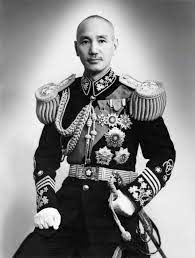HIST 1020 Test 3
1/130
Earn XP
Name | Mastery | Learn | Test | Matching | Spaced |
|---|
No study sessions yet.
131 Terms
Black Hand
A secret society formed in Serbia. Committed to the unification of all South Slavs and the creation of a Greater Serbia. Responsible for the assassination of Archduke Franz Ferdinand, triggering WWI.
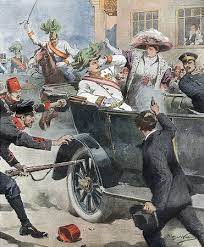
Triple Entente
Alliance formed during WWI between France, Russia, and Britain. Aimed to counter the Triple Alliance and maintain peace in Europe.
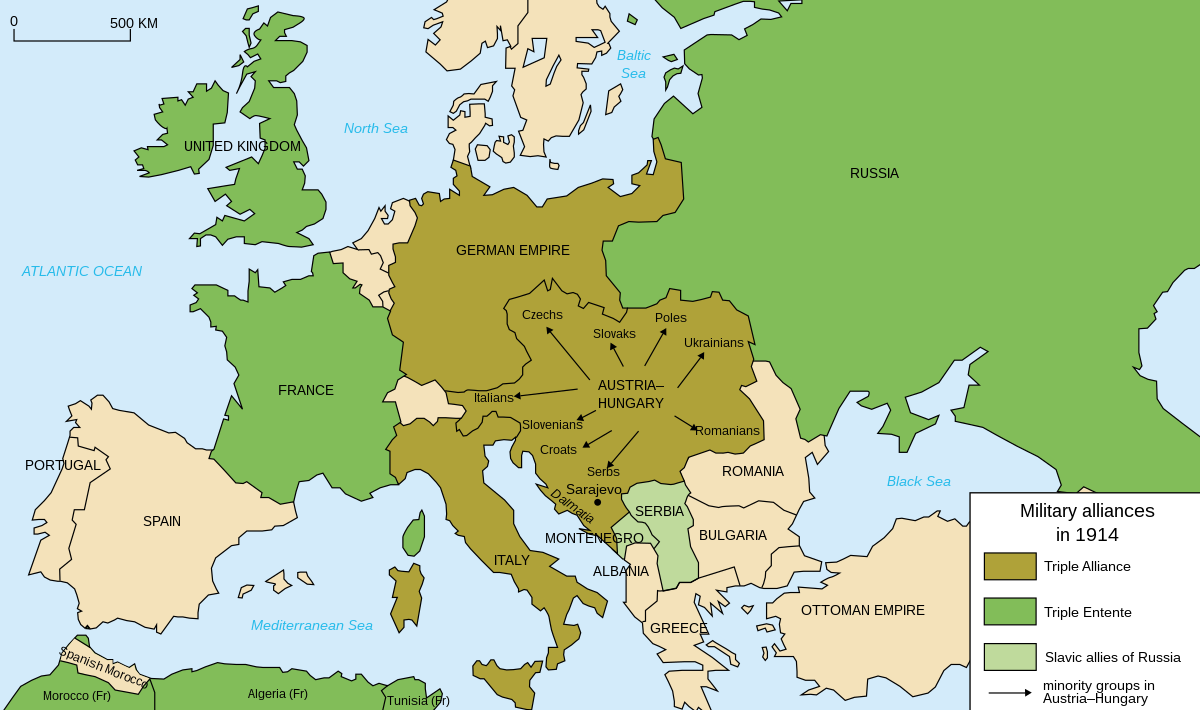
Central Power
Military alliance formed in WWI between Germany, Austria-Hungary, the Ottoman Empire, and Bulgaria.

Trench Warfare
A military strategy used during World War I involved long, narrow ditches dug into the ground. Soldiers would live and fight in these trenches, facing severe conditions including mud, disease, and constant danger. This was a defensive tactic aimed at protecting troops from enemy fire but resulted in a stalemate on the Western Front.

“No Man’s Land”
A term referring to the unoccupied and dangerous area between two opposing forces during a conflict, where neither side has control.
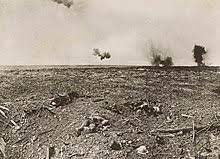
“Over the Top”
When soldiers would go over the protective wall of the trench, to attack the enemy trench line. They would commonly have to leave their trench and go into “No Man’s Land” for battle.
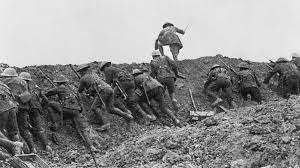
Poison Gas
First use of chemicalized warfare methods were utilized during WWI. This caused rising death tolls among troops and civilians, along with the need for new protection.
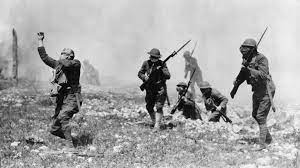
Total War
A military strategy that involves a nation's full resources and population, targeting both military and civilian assets to achieve complete victory. Examples include the bombing of cities, conscription, and economic mobilization.
Homefront
A systematic mobilization of the entire population and entire economy to produce soldiers, food supplies, munitions, and money needed to win the war.
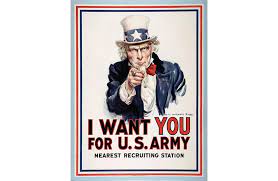
Treaty of Brest Litovsk
The peace treaty signed between Soviet Russia and the Central Powers (Germany, Austria-Hungary, Ottoman Empire, and Bulgaria). It ended Russia's involvement in World War I. Russia ceded vast territories, including Ukraine, Belarus, Baltic states, and Finland. This marked a significant loss for Russia and led to political instability.
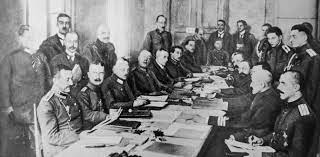
Armistice
An agreement of the ceasefire that ended hostilities between the Allies and Germany. This did not end the war but stopped fighting on the Western Front while the terms of permanent peace were discussed.
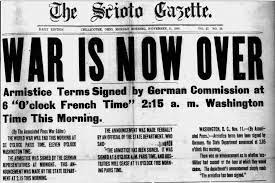
Treaty of Versailles
Peace treaty signed in 1919, ending WWI. Imposed harsh terms on Germany, including territorial losses, military restrictions, and massive reparations. Contributed to German resentment and economic instability, ultimately leading to WWII.
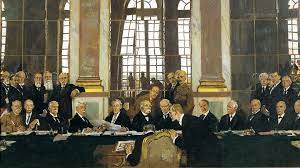
Fourteen Points
Woodrow Wilson's plan for peace after WWI, called for self-determination, open diplomacy, disarmament, and the League of Nations.
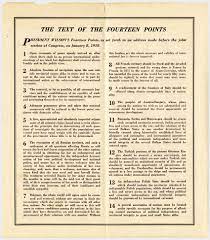
Self-determination
The ability of individuals or groups to make decisions and govern themselves without external interference or control. Wilson wanted to re-draw the frontiers of Eastern Europe so that races ruled themselves. The Treaty of Versailles created Poland by taking West Prussia from Germany.
Mandates
An authorization granted by the League of Nations to a member nation to govern a former German or Turkish colony.
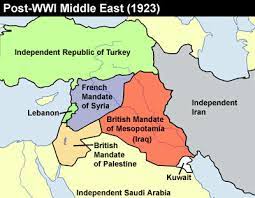
League of Nations
An international organization established after WWI to promote peace and prevent future conflicts. It aimed to encourage cooperation among nations, resolve disputes diplomatically, and protect the rights of all countries. However, it was weakened by the absence of powerful nations like the US and failed to prevent WWII.
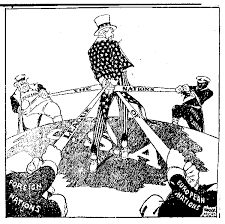
Romanov Family
The ruling family of Russia who valued wealth. After ineffective rulings they were overthrown during the Russian Revolution. Led by Tsar Nicholas II and Tsarina Alexandra. Assassinated by the Bolsheviks in 1918. Their deaths marked the end of the Romanov dynasty and the beginning of Soviet rule in Russia.
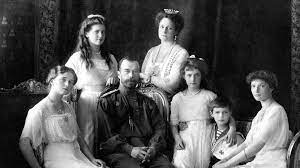
October Manifesto
A document issued by Tsar Nicholas II of Russia. It promised civil liberties and a legislative assembly called the Duma. The manifesto was a response to the Russian Revolution and aimed to appease the discontented masses. However, the Tsar later dissolved the Duma and reversed many of the promised reforms.

February Revolution
The event in Russia that led to the overthrow of the Tsarist autocracy. It started with protests and strikes in Petrograd, demanding an end to food shortages and the ongoing war. The revolution escalated, and the Tsar abdicated, marking the end of Romanov rule.
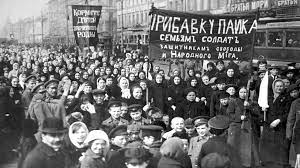
October Revolution
A pivotal event that led to the overthrow of the Provisional Government and the establishment of the Soviet Union (Leon Trotsky). The revolution was led by the Bolshevik Party, led by Vladimir Lenin, and marked the beginning of communist rule in Russia.
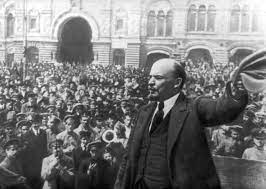
Bolshevik
A political party that led the October Revolution in Russia in 1917, overthrowing the Provisional Government and establishing a socialist government. Led by Vladimir Lenin.
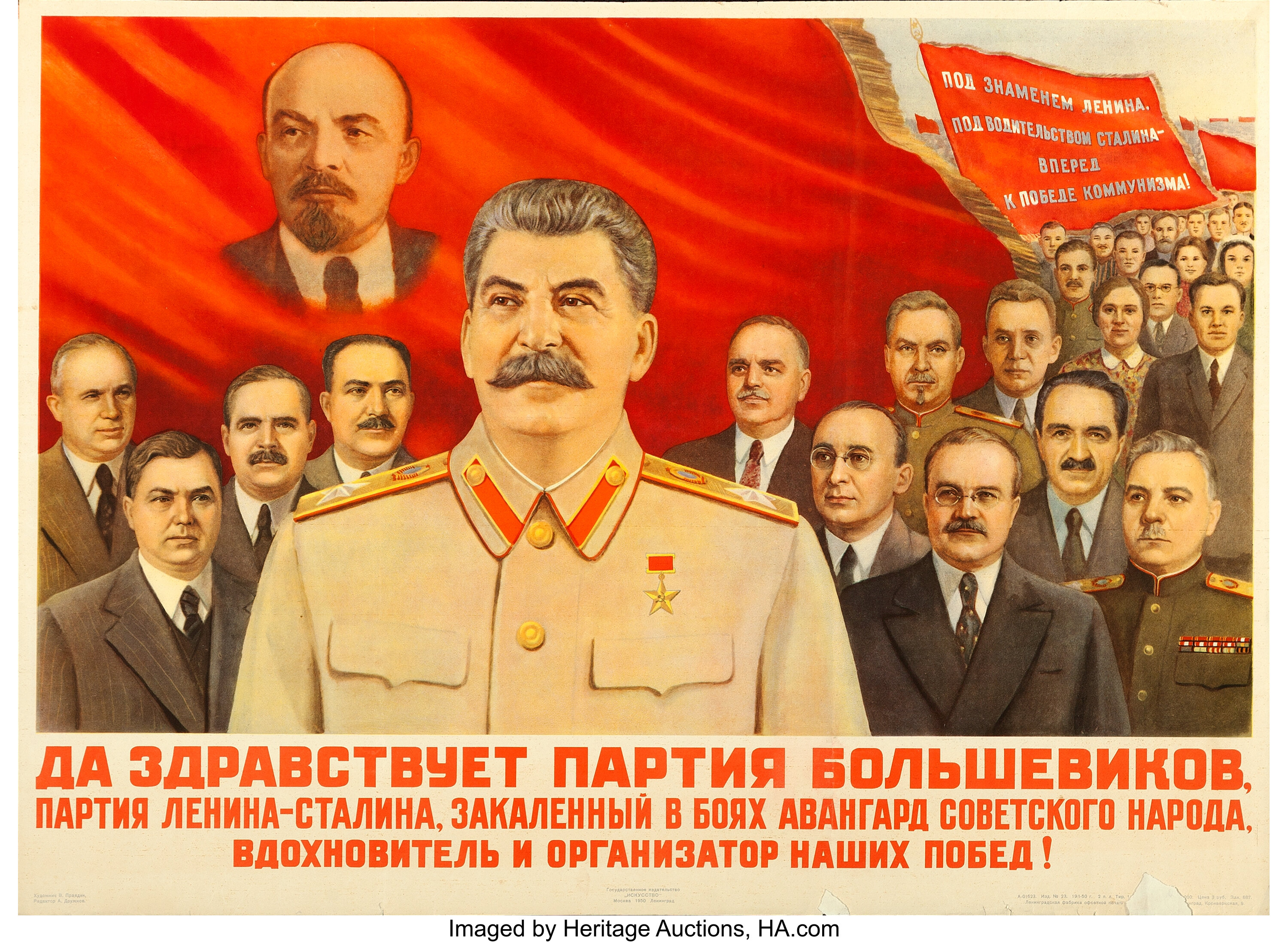
Red Scare
A form of public hysteria provoked by fear of the supposed rise of leftist ideologies in a society, especially communism. This caused fear and repression in citizens, influencing political debate and compromising civil liberties.
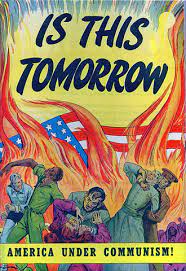
New Economic Policy
The economic policy of the government of the Soviet Union proposed by Vladimir Lenin, represented a temporary retreat from its previous policy of extreme centralization and doctrinaire socialism.

Turkification
Mustafa Kemal’s proposed model for modernizing Turkey. Involved the deliberate cultural, social, and linguistic assimilation policies employed by the Ottoman Empire and later the Republic of Turkey to promote Turkish identity. Aimed to standardize language, dress, and customs, often impacting diverse ethnic groups within the region.
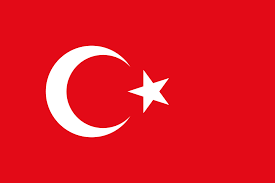
Suffrage
Women’s activities in support of the war helped change perceptions about the role of women. The struggle for women's suffrage in America was a hard-fought battle spanning decades, culminating in the ratification of the 19th Amendment, granting women the right to vote.

Hyperinflation
An extreme economic phenomenon characterized by an exceptionally rapid and uncontrollable increase in the general price level of goods and services within a specific time frame. It often leads to the devaluation of a country's currency, eroding its purchasing power and causing widespread economic turmoil.
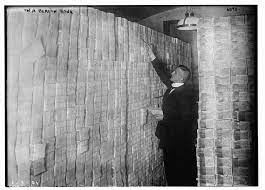
Weimar Germany
The nation faced economic turmoil marked by hyperinflation, where the value of currency rapidly plummeted, leading to astronomical price increases and social upheaval. This period, often illustrated by images of wheelbarrows full of money, contributed to political instability and set the stage for broader historical developments.
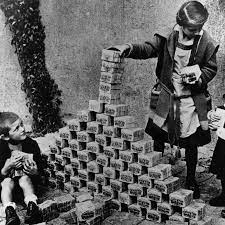
Flapper
A symbol of women's changing roles and newfound freedom. These rebellious and stylish young women challenged societal norms with their short hair, bold fashion choices, and a spirited embrace of jazz, embodying the carefree spirit of the time.

Prohibition
A constitutional ban on the production, importation, transportation, and sale of alcoholic beverages. This era, marked by speakeasies and organized crime, aimed to curb social issues but ultimately led to the opposite, fostering a thriving underground drinking culture.

Stock Market Crash
Also known as Black Tuesday, it marked the devastating culmination of an unpredictable time during the Roaring Twenties. On October 29, 1929, stock prices plummeted, triggering a severe economic downturn, widespread unemployment, and contributing to the onset of the Great Depression.
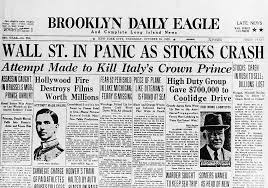
The Great Depression
A devastating global economic downturn marked by widespread unemployment, severe financial hardships, and a steep decline in industrial production. Triggered by the Stock Market Crash of 1929, its profound impact reshaped societal attitudes towards economics and spurred significant policy changes to prevent future economic catastrophes.
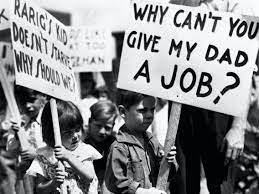
The New Deal
A set of social and economic programs initiated by President Franklin D. Roosevelt to address the challenges of the Great Depression. It aimed to provide relief, recovery, and reform through various government interventions, shaping the modern welfare state and significantly impacting the relationship between the state and the economy.
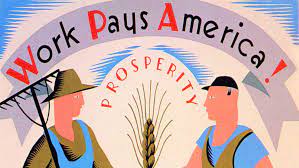
Fireside Chats
A series of informal radio broadcasts by President Franklin D. Roosevelt aimed to connect with the American public and explain complex issues in a relatable manner. Set against a backdrop of the Great Depression and World War II, these intimate talks fostered a sense of trust and unity between the president and the citizens he addressed.

Cult of Personality/Cult of the Leader
A social phenomenon where an individual, typically a political leader or public figure, is elevated to an almost god-like status through the promotion of an idealized and charismatic image. This often involves the glorification of the person's character, achievements, and leadership qualities, fostering a sense of unwavering loyalty and adoration among followers.

Five Year Plans
A series of centralized economic initiatives implemented by the Soviet Union aimed at rapid industrialization and economic development. These plans set specific targets for sectors like agriculture and manufacturing, reflecting the Soviet government's commitment to planned economies and socialist ideals.
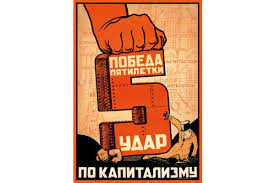
Collectivization
A socio-economic policy implemented under Joseph Stalin aimed to consolidate individual farms into collective farms, known as kolkhozes, in an effort to modernize agriculture, increase production efficiency, and exert state control over the rural sector. This resulted in widespread resistance, economic disruption, and a devastating famine in Ukraine (Holodomor).
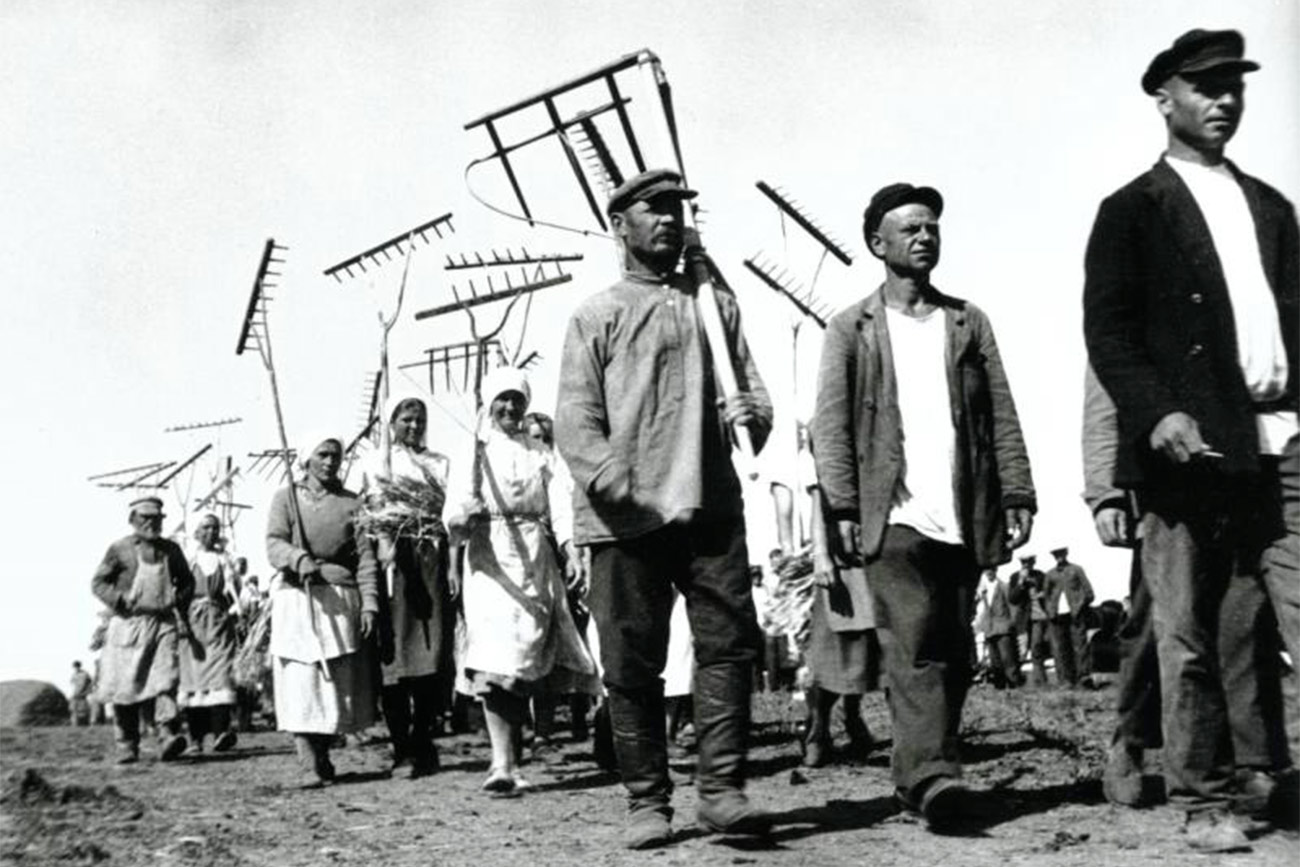
Kulak
Prosperous peasants who were often considered class enemies by the Communist regime for their perceived wealth and resistance to collectivization. The government implemented harsh measures, including confiscation of their property and exile, as part of their efforts to eliminate perceived capitalist elements and establish collective farming.

Holodomor
A devastating man-made famine that occurred in Soviet Ukraine, resulting in millions of deaths due to forced starvation. The tragedy was exacerbated by Joseph Stalin's policies, including forced collectivization and confiscation of grain, leading to one of the darkest chapters in Ukrainian history.
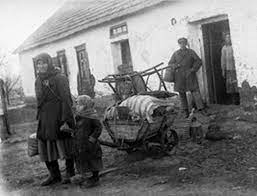
Fascism
The political ideology and system of governance that emerged during the rule of Benito Mussolini. Drawing inspiration from ancient Roman symbols and values, Mussolini's fascist regime sought to revive the glory of the Roman Empire, emphasizing authoritarian rule, nationalism, and militarism as key pillars of its political philosophy.
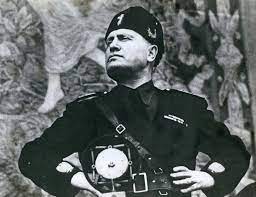
Beer Hall Putsch
A failed coup attempt by Adolf Hitler and the Nazi Party where they tried to seize power in Munich, Germany. The uprising, staged in a beer hall, marked an early but unsuccessful bid for control that would later contribute to the rise of the Nazi regime.
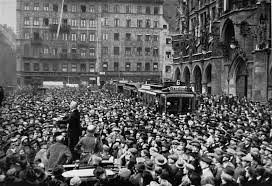
Nazism
Ideology rooted in Adolf Hitler’s propagated extreme nationalist and racist beliefs. It promoted Aryan supremacy and anti-Semitism within Germany. The Nazi Party's rise to power was fueled by economic turmoil, societal discontent, and Hitler's charismatic leadership, ultimately leading to the devastating events of World War II.

Sturmabteilung (SA)
Also known as the Brownshirts, this was the paramilitary wing of the Nazi Party in Germany. Its primary role was to intimidate political opponents through violent means, playing a significant role in Hitler's rise to power until its decline in influence.
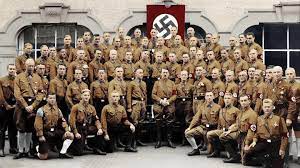
Reichstag Fire
In Germany the parliament building went up in flames, providing the Nazis with a pretext to consolidate power by blaming and suppressing political opponents. Many historians argue that the incident was exploited by the Nazi regime to curtail civil liberties and establish authoritarian control, marking a crucial turning point in the establishment of Hitler's dictatorship.
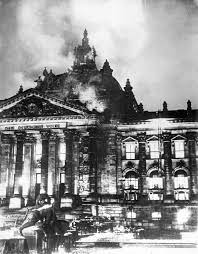
Anschluss
Refers to the annexation of Austria by Nazi Germany, a move that violated the Treaty of Versailles and marked a significant step toward Adolf Hitler's expansionist goals. The term specifically denotes the forced political union between Germany and Austria, illustrating the aggressive territorial ambitions that ultimately contributed to the outbreak of World War II.
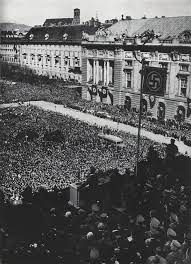
Sudetenland
Refers to the border regions of Czechoslovakia, inhabited by a German-speaking majority, which became a focal point leading up to World War II. The Munich Agreement allowed Nazi Germany to annex Sudetenland, highlighting the appeasement policy and the destabilizing events that ultimately contributed to the outbreak of the war.
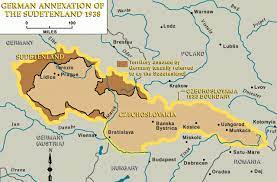
Molotov-Ribbentrop Pact
A non-aggression agreement signed between the Soviet Union and Nazi Germany. This shocked the world by dividing Eastern Europe into spheres of influence for the two totalitarian regimes. The secret protocol of the pact outlined the carve-up of countries like Poland, setting the stage for the early stages of World War II.

Blitzkrieg
A German military strategy employed during World War II characterized by swift and coordinated attacks using combined arms, including infantry, artillery, and air support. This lightning warfare aimed to create chaos and disrupt enemy defenses, allowing for rapid territorial gains.
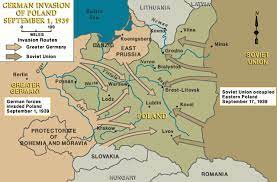
Allied Powers
A coalition of nations, including the United States, Great Britain, and the Soviet Union. Their collective efforts ultimately led to the defeat of Nazi Germany and its allies.
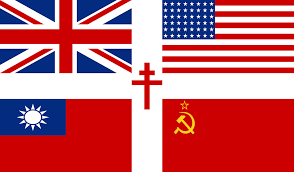
Axis Powers
A coalition of nations led by Germany, Italy, and Japan. They sought to expand their territories through military conquest, leading to WWII.
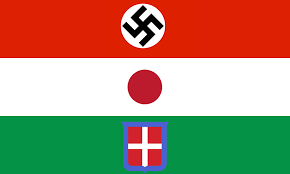
“The Blitz”
A sustained bombing campaign carried out by the German Luftwaffe against British cities during World War II. The relentless airstrikes resulted in significant damage and loss of life, but the resilience of the British people and the Royal Air Force ultimately stopped the German attempt to break their morale.
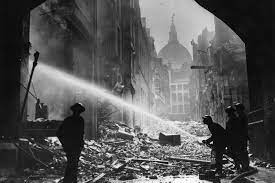
Operation Barbarossa
The codename for Nazi Germany's invasion of the Soviet Union during World War II, launched on June 22, 1941. Despite initially making significant territorial gains, the campaign ultimately ended in a decisive Soviet counteroffensive, marking a turning point on the Eastern Front.
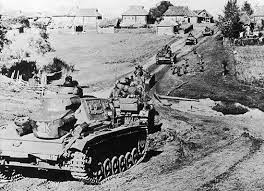
Stalingrad
A pivotal battle during World War II where Soviet forces successfully defended the city against the German Army in a brutal and decisive conflict. The intense urban warfare and harsh winter conditions played a significant role in turning the tide on the Eastern Front, marking a crucial shift in the momentum of the war.
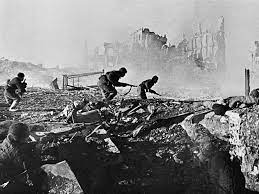
Tehran Conference
Brought together the leaders of the Allied powers—Joseph Stalin, Franklin D. Roosevelt, and Winston Churchill—to discuss military strategy and post-war plans. The conference marked a crucial moment of collaboration, shaping the course of the war and laying the groundwork for future diplomatic efforts.
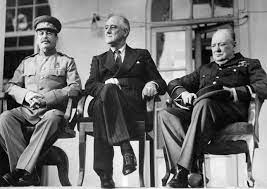
D-Day
(June 6, 1944) Marked the Allied forces' massive amphibious invasion on the beaches of Normandy during World War II. This pivotal operation played a crucial role in turning the tide against Nazi Germany, ultimately leading to the liberation of Western Europe.
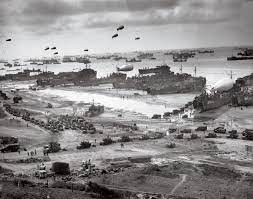
Yalta Conference
Brought together the leaders of the Allied powers—Franklin D. Roosevelt, Winston Churchill, and Joseph Stalin—to discuss post-war Europe's reorganization. The conference established a framework for the division of Germany and the formation of the United Nations, shaping the geopolitical landscape of the Cold War era.
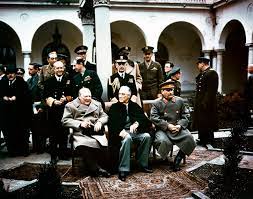
Potsdam Conference
A crucial post-World War II meeting where Allied leaders Truman, Stalin, and Churchill discussed the reorganization of Germany and the broader European landscape, solidifying post-war agreements and shaping the early Cold War dynamics. The conference marked a turning point in international relations, setting the stage for the division of Germany and the beginning of the East-West ideological divide.
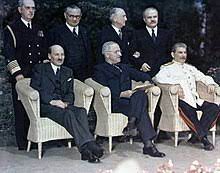
Atomic Bomb
The United States developed and deployed the atomic bomb—a devastating weapon harnessing nuclear fission. Dropped on the Japanese cities of Hiroshima and Nagasaki, it marked the first and only use of nuclear weapons in warfare, hastening Japan's surrender and shaping the course of history.
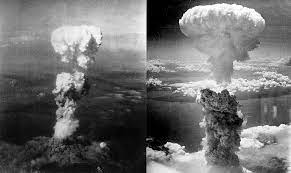
Island Hopping
A military strategy employed by the Allies in the Pacific theater. Instead of capturing every Japanese-held island, they selectively targeted strategic ones, gradually advancing towards Japan, minimizing casualties, and isolating enemy strongholds.
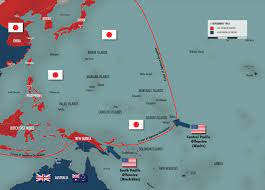
Genocide
Defined as any acts committed with intent to destroy, in whole or in part, a national, ethnical, racial or religious group. The “Century of Genocides” was marked by systematic and mass extermination campaigns. The stages in which genocide developed include classification, symbolization, discrimination, dehumanization, organization, polarization, preparation, persecution, extermination, and denial.
Holocaust/Shoah
A systematic genocide orchestrated by the Nazis during World War II, resulting in the mass persecution and extermination of six million Jews, along with millions of other targeted groups, including Romani people, Poles, Soviet POWs, and disabled individuals. This dark chapter in history reflects the horrors of prejudice, racism, and the extreme consequences of unchecked hatred.
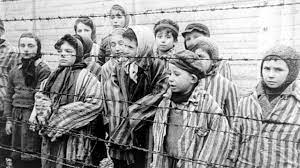
Blood Libel
A historically false and malicious accusation that has been leveled against Jewish communities, falsely claiming that they engage in the ritualistic murder of children to use their blood in religious practices. This baseless and harmful conspiracy has fueled anti-Semitic sentiments throughout history, leading to discrimination and violence against Jewish populations.
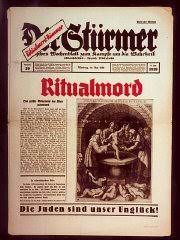
Aryan
Belief propagated by the Nazis of a supposed “pure” Aryan race was superior to all others. This ideology fueled the atrocities of the Holocaust and played a central role in Nazi racial policies.
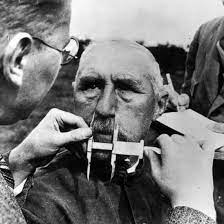
Nuremberg Laws
A set of anti-semitic and racist laws implemented by Nazi Germany, stripping Jews of their citizenship and prohibiting relationships or marriages between Jews and non-Jews. These laws were a precursor to the systematic persecution and genocide of the Holocaust.
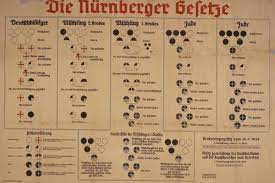
Racial Hygiene
Advocated for selective breeding and eugenic measures to maintain and enhance perceived racial purity. Adopted by the Nazis for the preservation of a perceived Aryan master race and the systematic elimination of those deemed racially inferior.
Eugenics
A field of study that explores or advocates for improving the genetic quality of the human population through selective breeding or other manipulative measures. Fueled practices such as forced sterilizations, medical experiments, and ultimately, the mass extermination of individuals deemed undesirable by the Nazi regime.
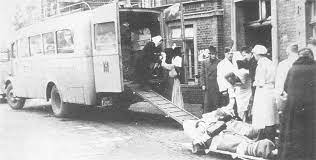
Kristallnacht
Also known as the Night of Broken Glass, was a violent pogrom against Jews in Nazi Germany. It involved the widespread destruction of synagogues, homes, and businesses, marking a dark turning point in the escalating persecution of Jews leading up to the Holocaust.
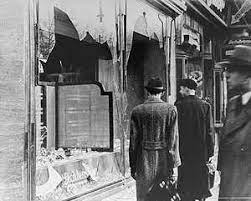
Ghetto
Segregated areas established by the Nazi regime to confine and exploit Jewish populations in Eastern Europe. These overcrowded and impoverished neighborhoods served as a precursor to the systematic genocide that unfolded, as residents faced harsh living conditions, persecution, and eventual deportation to concentration and extermination camps.
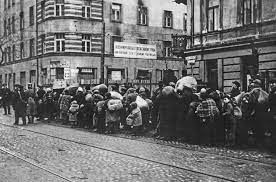
Wannsee Conference
A meeting held in January 1942 where high-ranking Nazi officials devised and coordinated the implementation of the "Final Solution," a systematic plan for the genocide of European Jews during the Holocaust. Led by SS officer Reinhard Heydrich, the conference marked a dark turning point in history, outlining the bureaucratic details of mass extermination.
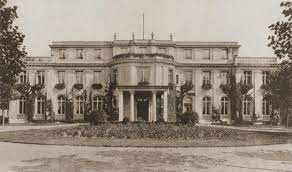
Madagascar Plan
A proposal devised by Nazi Germany suggesting the forced relocation of the Jewish population to the island of Madagascar as a supposed solution to the so-called "Jewish question." This plan, rooted in anti-Semitism, was never implemented and was ultimately abandoned with the escalation of the Holocaust during World War II.
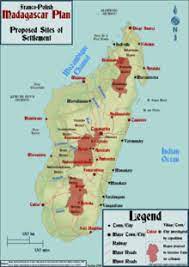
Final Solution
The Nazi regime's systematic plan during World War II to annihilate the Jewish population of Europe, leading to the genocide known as the Holocaust. This horrific scheme involved mass extermination through methods such as concentration camps, mass shootings, and gas chambers, resulting in the systematic and brutal murder of six million Jews.
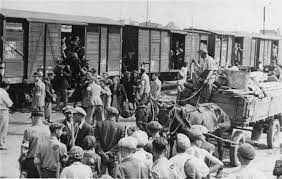
Zyklon B
A highly toxic pesticide used by the Nazis during the Holocaust as a means of mass extermination in gas chambers. Its lethal hydrogen cyanide component played a tragic role in the genocide, highlighting the grim intersection of chemistry and human atrocity.

Untermensch
Meaning "subhuman" in German, was a derogatory concept used by the Nazis to dehumanize and vilify certain groups, particularly Jews, Romani people, and others deemed racially inferior. This ideology played a pivotal role in justifying the atrocities committed during the Holocaust, reflecting the dehumanizing mindset of the Nazi regime.
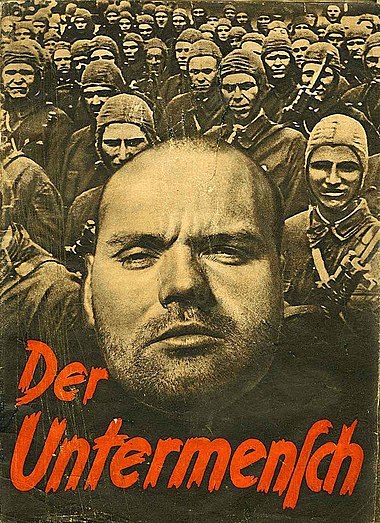
“Arbeit Macht Frei”
A German phrase that translates to "Work Sets You Free." It gained infamy as the deceptive slogan prominently displayed at the entrances of several Nazi concentration camps during World War II, cruelly misleading prisoners about the nature of their captivity and the ultimate fate that awaited them.
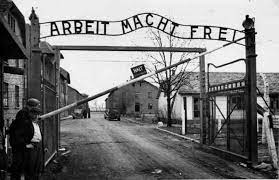
Dachau
The first Nazi concentration camp, established in 1933 near Munich, Germany, served as a model for later camps. Infamous for its harsh conditions and systematic brutality, it became a symbol of the atrocities committed during the Holocaust, housing political prisoners, intellectuals, and various marginalized groups targeted by the Nazi regime.

Auschwitz-Birkenau
The largest and most notorious concentration and extermination camp established by Nazi Germany during World War II. Located in occupied Poland, it became a symbol of the Holocaust, where millions of innocent lives were systematically murdered as part of the Nazis' genocidal agenda.
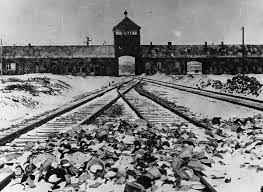
Nuremberg Trials
A series of military tribunals held after World War II to prosecute prominent leaders of Nazi Germany for war crimes and crimes against humanity. These trials set a precedent for international law and played a crucial role in addressing the atrocities committed during the Holocaust and the broader war.

Iron Curtain
The ideological divide between the democratic West and the communist East. In Churchill’s address he warned of the looming threat posed by the Soviet Union, emphasizing the need for vigilance and collaborating among Western nations to safeguard freedom and democracy.
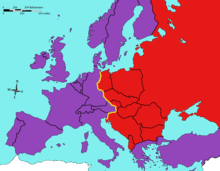
Marshall Plan
A post-World War II recovery program that provided substantial economic aid to European countries, fostering reconstruction, stability, and building a foundation for long-term prosperity. This initiative solidified the United States as a key player in shaping the post-war global order.
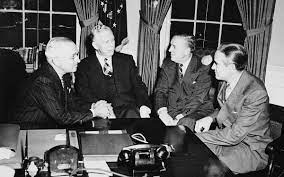
Berlin Wall
A barrier that physically and ideologically divided East and West Berlin during the Cold War. It stood as a symbol of the broader East-West divide until its historic fall in 1989, marking the reunification of Germany and the end of the Cold War era.
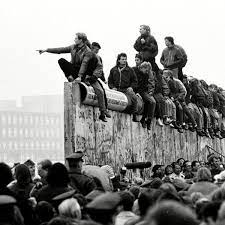
The North Atlantic Treaty Organization (NATO)
A military alliance formed in 1949, comprising member countries committed to mutual defense against external aggression, promoting stability and cooperation among its members. It serves as a collective security umbrella where an attack on one member is considered an attack on all, fostering a unified defense strategy and diplomatic collaboration among North American and European nations.
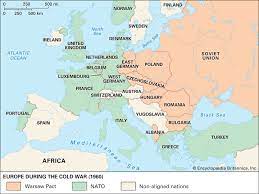
Warsaw Pact
A military alliance led by the Soviet Union, comprising Eastern Bloc socialist republics during the Cold War. It served as a counterbalance to NATO and dissolved with the end of the Cold War, marking a significant geopolitical shift in Europe.
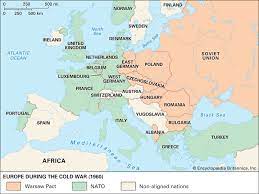
Containment
A Cold War strategy devised by the United States, aimed to prevent the spread of communism by diplomatically, economically, and militarily containing the influence of the Soviet Union and communist ideologies globally. The policy guided U.S. foreign relations, shaping alliances and conflicts as nations grappled with the ideological struggle between capitalism and communism.
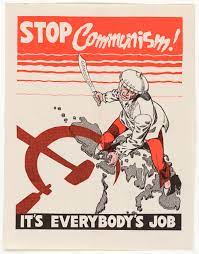
Domino Theory
Assumed that the spread of communism in one country could trigger a chain reaction, causing neighboring nations to fall under communist influence like a row of falling dominoes. This theory significantly influenced U.S. foreign policy.

McCarthyism
The political era characterized by intense anti-communist sentiment in the United States. It involved unfounded accusations of government overthrow and widespread fear of communist infiltration, leading to investigations, blacklisting, and the erosion of civil liberties in the pursuit of eliminating perceived communist influence.
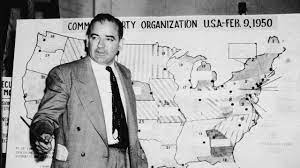
The House Un-American Activities Committee (HUAC)
A U.S. congressional committee tasked with investigating alleged disloyalty and traitorous activities, particularly during the early years of the Cold War, often leading to controversial hearings and investigations into individuals suspected of communist ties. Notorious for its role in Hollywood blacklisting and the Red Scare, HUAC's inquiries had a significant impact on the entertainment industry and American political climate.

Manhattan Project
Launched during World War II, this was a top-secret research and development project that produced the world's first nuclear weapons. Led by the United States, the project brought together brilliant scientists and engineers to develop the atomic bombs dropped on Hiroshima and Nagasaki, ultimately influencing the course of history and shaping the nuclear age.
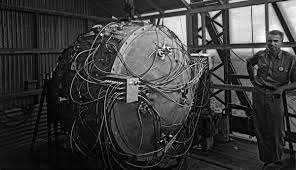
Los Alamos
Established during World War II as part of the Manhattan Project, is a town in New Mexico synonymous with scientific innovation and the development of the first atomic bombs. The secret laboratory housed brilliant minds like J. Robert Oppenheimer, leading to groundbreaking advancements in nuclear physics.
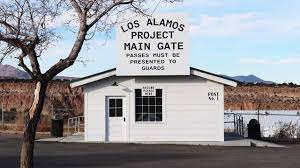
Trinity Test
This marked the first successful detonation of a nuclear weapon, signaling the dawn of the atomic age. Taking place in New Mexico as part of the Manhattan Project, this historic event played a pivotal role in shaping the course of World War II and the subsequent Cold War.
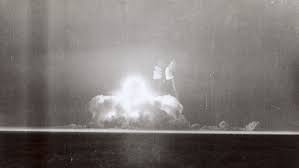
Castle Bravo
The code name for the first successful test of a hydrogen bomb by the United States at Bikini Atoll in the Pacific. The test resulted in an unexpectedly powerful explosion, yielding a much higher level of destruction than anticipated and causing widespread fallout.

Tsar Bomba
Detonated by the Soviet Union, stands as the most powerful nuclear weapon ever tested, with an unprecedented yield of 50 megatons. This massive hydrogen bomb, a chilling testament to Cold War tensions, remains a stark reminder of the destructive capabilities of nuclear weapons.
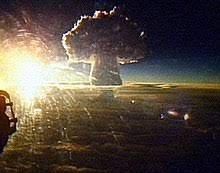
Mutually Assured Destruction
A Cold War doctrine in which nuclear-armed nations refrained from initiating a nuclear conflict due to the certainty that both sides would suffer catastrophic, irreparable damage in the event of a full-scale war. This logic rested on the belief that the fear of mutual annihilation served as a deterrent, contributing to a tense stability between the United States and the Soviet Union during the Cold War era.
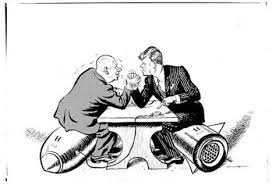
Cuban Missile Crisis
A 13-day confrontation between the United States and the Soviet Union over the placement of Soviet ballistic missiles in Cuba, bringing the two superpowers to the brink of nuclear war. Intense diplomatic negotiations and a tense naval blockade ultimately averted a catastrophic conflict, marking a critical moment in Cold War history.
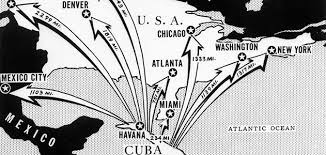
“Duck and Cover”
A civil defense campaign in the United States, urging citizens, particularly schoolchildren, to take cover in the event of a nuclear attack by crouching under desks or finding protective shelter. Accompanied by a memorable animated film featuring a character named Bert the Turtle, the campaign aimed to instill a sense of preparedness during a time of heightened nuclear anxiety.
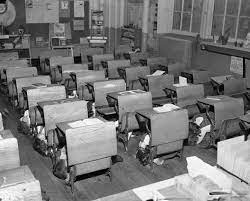
Four Pests Campaign
A initiative launched by the Chinese government, aimed at eradicating pests deemed harmful to agriculture and public health. Targeting rats, flies, mosquitoes, and sparrows, the campaign employed various methods, including mass extermination efforts, which had significant ecological and unintended consequences.
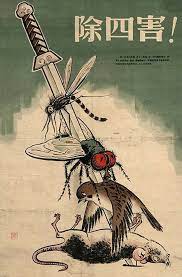
Cultural Revolution
A tumultuous socio-political movement initiated by Mao Zedong. Characterized by mass mobilization, ideological purges, and widespread upheaval, it sought to eradicate perceived bourgeois elements and reshape Chinese society according to Maoist communist ideals, leaving a lasting impact on the nation's history and cultural fabric.
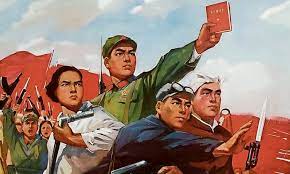
Red Guard
Refers to various political and paramilitary groups that emerged during the Chinese Cultural Revolution. Comprised mainly of enthusiastic young people, this group supported Mao Zedong's ideologies and played a significant, although tumultuous, role in the socio-political landscape of that era.
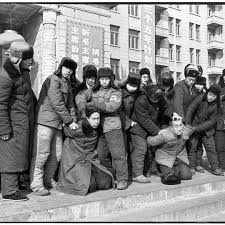
Kuomintang
A major political party in Taiwan with a history deeply intertwined with the island's modern development. Originally founded in China, the KMT played a key role in the country's early 20th-century politics and later retreated to Taiwan after losing the Chinese Civil War to the Communist Party.
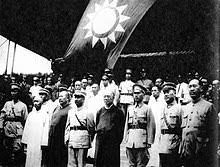
Chinese Communist Party
The ruling political party in the People's Republic of China. Known for its one-party rule, the CCP has played a pivotal role in shaping China's modern political, economic, and social landscape.
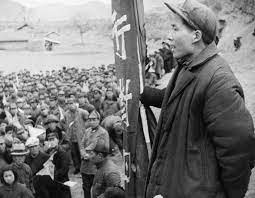
Mao Zedong
A charismatic and strategic leader, played a pivotal role in the Chinese Communist Revolution, leading the Red Army to victory. As the founding father of the People's Republic of China, his vision and revolutionary passion shaped the nation's course, though his policies, such as the Great Leap Forward and the Cultural Revolution, also brought about immense social and economic upheaval.
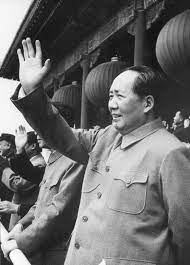
Chiang Kai-shek
A prominent Chinese political and military leader in the first half of the 20th century, playing a key role in the Nationalist government. Despite his efforts to unite China against external threats, his leadership faced challenges, including the Chinese Civil War and ultimately the retreat to Taiwan, where he continued to govern until his death.
